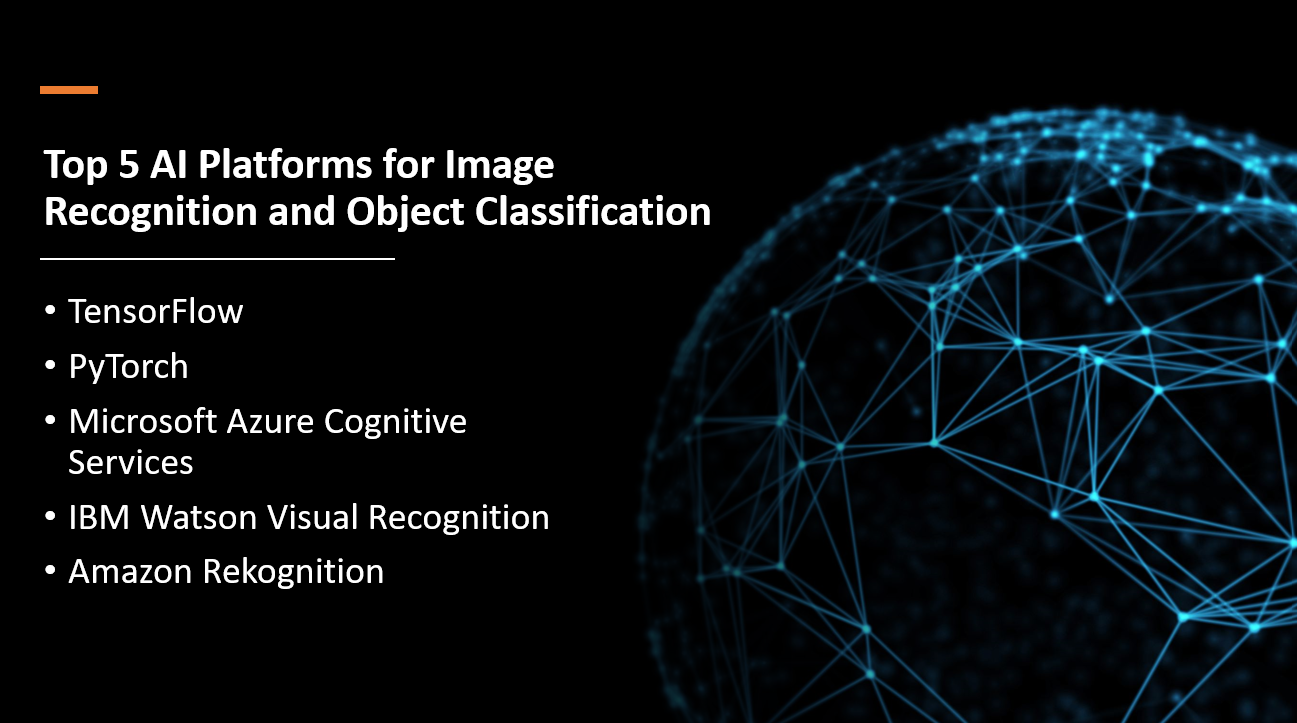
Introduction
Image recognition and object classification are crucial tasks in computer vision, enabling AI systems to identify and categorize objects within images accurately. AI platforms equipped with advanced image recognition algorithms play a significant role in various industries, from autonomous vehicles to healthcare. In this blog post, we will explore the top five AI platforms for image recognition and object classification, empowering developers and businesses to harness the power of computer vision for a wide range of applications.
Why Use AI Platforms for Image Recognition and Object Classification?
- AI platforms provide precise image recognition and object classification.
- AI automates the process, enabling fast analysis of large image datasets.
- AI can handle extensive image collections for various applications.
- AI platforms improve accuracy over time by learning from new data.
- AI can recognize and classify a wide range of objects in different industries.
Related Reading:
Here's Our Top 5 AI Platforms for Image Recognition and Object Classification:
1: TensorFlow
Overview and Importance
TensorFlow is a widely recognized AI platform that plays a crucial role in image recognition and object classification. Developed by Google Brain, it has become a go-to tool for researchers, developers, and enterprises in the field of computer vision. Its versatility, scalability, and extensive community support make it a preferred choice for various image-related tasks.
Key Features and Capabilities
Deep Learning Framework
- TensorFlow offers a powerful deep learning framework with pre-built layers and models, enabling users to build, train, and deploy complex image recognition and object classification models.
GPU Acceleration
- TensorFlow provides GPU support, which significantly speeds up the training and inference processes for image-based tasks, making it suitable for handling large-scale datasets.
TensorFlow Hub
- TensorFlow Hub is a repository of pre-trained models and modules that users can easily integrate into their projects, allowing them to leverage existing knowledge and expertise in image recognition and classification tasks.
2: PyTorch
Overview and Importance
PyTorch is a prominent AI platform widely used for image recognition and object classification tasks. It has gained popularity among researchers and developers due to its dynamic computational graph and intuitive interface, making it a preferred choice for building and experimenting with advanced computer vision models.
Key Features and Capabilities
Dynamic Computational Graph
- PyTorch's dynamic computational graph allows for on-the-fly model building and modification, which is advantageous for developing complex image recognition and object classification architectures.
GPU Acceleration
- PyTorch supports GPU acceleration, enabling faster training and inference, making it well-suited for handling large image datasets and real-time applications.
TorchVision Library
- PyTorch comes with the TorchVision library, providing pre-trained models, datasets, and utilities for common computer vision tasks, streamlining the development process for image-based projects.
Related Reading:
3: Microsoft Azure Cognitive Services
Overview and Importance
Microsoft Azure Cognitive Services is a comprehensive suite of AI services that includes powerful tools for image recognition and object classification. Leveraging cutting-edge machine learning algorithms, it empowers developers and enterprises to build advanced vision-based applications without the need for extensive AI expertise.
Learn more about Microsoft Azure Cognitive Services
Key Features and Capabilities
Vision API
- Azure Cognitive Services provides a Vision API that supports various image-related tasks, such as image recognition, object detection, and facial recognition, enabling developers to extract valuable insights from visual data.
Custom Vision
- With Custom Vision, users can create and train custom image classification models tailored to specific business needs, empowering organizations to develop domain-specific image recognition solutions.
Image Analysis
- The Image Analysis capability allows for in-depth analysis of images, including identifying landmarks, celebrities, and emotions, making it a versatile tool for image understanding and categorization.
4: IBM Watson Visual Recognition
Overview and Importance
IBM Watson Visual Recognition is a powerful AI platform that enables businesses to harness the potential of image recognition and object classification. By leveraging state-of-the-art deep learning models, it empowers organizations to extract valuable insights from images, enhance decision-making processes, and create innovative applications.
Learn more about IBM Watson Visual Recognition
Key Features and Capabilities
Pre-Trained Models
- IBM Watson Visual Recognition offers a collection of pre-trained models that can recognize various objects, scenes, and concepts in images, simplifying the development of image recognition applications.
Customization
- Users can train their custom models using their labeled data to achieve domain-specific image classification, tailored to specific business requirements.
Image Analysis
- The platform provides capabilities to analyze images for faces, text, and other visual elements, facilitating a comprehensive understanding of visual data for various applications, from facial recognition to content moderation.
Related Reading:
5: Amazon Rekognition
Overview and Importance
Amazon Rekognition is a leading AI platform that plays a pivotal role in image recognition and object classification. It leverages advanced machine learning algorithms to analyze and interpret images, making it a valuable asset for various industries, from media and entertainment to surveillance and security.
Learn more about Amazon Rekognition
Key Features and Capabilities
Object and Scene Detection
- Amazon Rekognition can detect and identify objects, scenes, and activities in images, enabling businesses to automate tasks like content moderation, inventory management, and more.
Facial Analysis
- The platform offers powerful facial analysis capabilities, allowing users to detect and recognize faces, perform facial comparison, and analyze facial expressions, making it ideal for use in authentication and emotion analysis applications.
Image Search
- Amazon Rekognition provides image search functionality, enabling users to index and search vast image libraries based on visual content, offering valuable insights for image-based information retrieval and organization.
Conclusion
AI platforms are highly significant for accurate image recognition and object classification. The top five platforms are TensorFlow, PyTorch, Microsoft Azure Cognitive Services, IBM Watson Visual Recognition, and Amazon Rekognition. They offer powerful deep learning capabilities, pre-trained models, and user-friendly interfaces. Using these AI platforms has a significant impact across industries, from enhancing smart surveillance to improving augmented reality applications. Developers and businesses should explore these platforms to leverage computer vision's power and enhance their applications with accurate image recognition and object classification capabilities.
